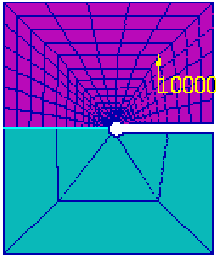XXXXXXXXXXXXXXXXXXXXXXXXXXXXXXXXXXXXXXXXXXXXXXXXXXXXXXXXXXXXXXXXXXXXXXXXXXXXXXXXXXXXXXXXXXXXXXXXXXXXXXXXXXXXXXXXXXXXXXXXXXXXXXXXXXXXXXXXXXXXXXXXXXXXXXXX''"> Problem Description
We now revert back to our first problem, the keyhole model to introduce the concept of linear elastic fracture mechanics (LEFM) or Crack Growth. Subject to the same loading as before and to the complex transmission loading sequence (SAETRN), we are interested in determining what remnant of life is left in this component after crack initiation and how long until the crack will become a catastrophic failure.
A detailed discussion of fracture mechanics and its governing principles is beyond the scope of this tutorial guide and the user is referred to the for a more detailed description. However, the concepts are explained here in as simple terms as possible to introduce the method.
Objective
• To introduce the LEFM life prediction method, commonly referred to as “Crack Growth.”
Table 7‑1 File |
P3_HOME/mscfatigue_files/examples/simpleSN.op2 |

